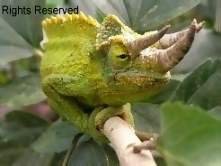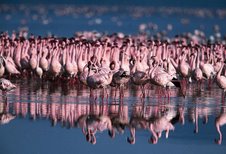As their name implies, African Fish Eagles are indigenous to Africa,
ranging over most of continental Africa south of the southern-most edge
of the Sahara Desert.
It is the national bird of Zimbabwe and Zambia.
The African Fish Eagle can be seen flying throughout the Kenya park
skies and is known by many different names, in many different
languages. Usually seen in the morning and evening times, in couples
along the rivers. Those of you who love the morning search for the big
cats along the rivers, have off course seen them endless times. It is a
beautiful bird, a fairly large eagle and can be identified by its
distinctive black, brown and white plumage.
Its habitat is usually limited to fresh water lakes, larger rivers,
reservoirs and dams, with enough large trees for it to perch on. These
eagles are also found near coastal lagoons and estuaries, but are
absent in very arid areas. The nest consists of a large pile of sticks,
120 to 180 cm in diameter, and 30 to 60 cm thick. It is usually build in
the fork of a tree, near water, but also sometimes on a cliff ledge or
in a low bush on a steep slope.
The African Fish Eagle is usually seen in pairs, whether it is inside
or outside of their breeding season. Breeding season for African Fish
Eagles is during the dry season, when water levels are low. African Fish
Eagles are believed to mate for life. The female lays 1 to 3 eggs,
which are primarily white with a few reddish speckles. Incubation is
mostly done by the female, but the male will incubate when the female
leaves to hunt. Incubation lasts for 42 to 45 days before the chicks
hatch. Fledging lasts for 70 to 75 days, and after about 8 weeks the
chick is capable of feeding itself and will usually begin to venture
outside of the nest 2 weeks later.
They evenly share the kills made by either between the two of them.
As its name suggests, its main diet consists mostly of fish, sometimes
dead, but mostly caught live. They are able to catch fish up to 1 kg in
weight and in some exceptional circumstances up to 3 kg. It is also
known to eat carrion and in some rare circumstances will even feed off
dassies, monkeys, monitor lizards, frogs, terrapins and insects. Hunting
takes place from where the eagle is perched and rarely whiles it is
soaring in the sky. Stooping at fish, African Fish Eagle will catch
their pray with their feet, usually within 15 cm of the water surface.
They may also submerge at times. The best places to see this magnificent
bird is in Amboseli national park, Tsavo national park , Maasai Mara
game reserve,lake Baringo and Nakuru National parks as well as around
Lake Naivasha
PKP. safaris in kenya desk
Natural Track Safaris.
Wednesday, October 3, 2012
Subscribe to:
Comments (Atom)








